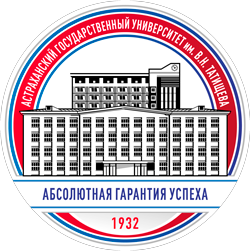Characteristic of the current financial model, including the structure of the main sources of income and expenses: ASU is a budgetary institution that independently carries out financial and economic activity according to the financial and economic activity plan based on all types of sources of financial support. The structure of income and expenses on the areas of activity is shown in Figure 1 in the appendix to the section. The total income of the University from all sources has been growing steadily for the five reporting years[1].
The main share in the income structure (excluding funds for capital investments) falls on educational activity (including supplementary education), – 68% (in 2020); scientific research and development – 2% (that indicates that the scientific and technical base is insufficient for the scientific development); other income – 10% (insufficient commercialization of the potential of the property complex, human capital, and inert development of endowment capital).
The main share of expenses in the structure of expenses falls on the wage fund (at least 78%), which significantly exceeds the level recommended by the Ministry of Science and Higher Education of the Russian Federation (70%). Despite the fact that property maintenance costs tend to decrease, their share (12%) in total expenses exceeded the average indicator by the end of 2020. The development budget was formed in 2020, its share – 7%. The University has approved the financial policy and structure, based on the organizational structure (without financial responsibility centers), there is no unified software product for automating processes.
The main financial model principles: striving for financial autonomy by increasing the income share of extra-budgetary sources; forming the development budget as a base for financial support of university initiatives, improving the image and competitiveness; creating financial responsibility centers, including financial results centers, by implementing budgeting mechanism as an incentive tool.
Mechanisms and tools of the financial model transformation:
- Achieving the planned indicator of “autonomy”: implementing the planned indicator for the income share from income-generating activities in the ASU total budget (excluding capital investments) – not less than 70 % (by 2030); increasing target capital – not less than 5% annually; maintaining the contingent of students studying on a repayable basis – 97%; – fulfilling planned indicators of the enrollment of 1st year students under the admission quotas and students studying on a repayable basis (taking into account the annual increase) – 100%.
- Achieving the income plan: increase in the income from income-generating activities per one scientific and pedagogical specialist (SPS) – not less than 6% annually; increase in the income share from research and innovation activities in total income by 2030 up to 6%.
- Implementing the program-targeted financing by developing programs in the main areas of the University’s activity: the share of the costs of ASU’s development budget in the volume of costs of financial and economic activities – not less than 18% by 2030; the share of labor costs (taking into account the increase in staff due to the reorganization) – not more than 63% by 2030; the share of costs for property maintenance (taking into account the newly introduced parts of the campus and merging ASUACE) – no more than 9% by 2030; the share of costs for other expenses – not more than 10% by 2030.
- Developing a balanced set of indicators and requirements for their implementation, fixed in the tasks for Central Federal District (CFD), based on both motivation to attract income by expanding the types of commercial activities and stimulation to develop faculties (chairs), structural units, taking into account implementation of basic internal regulatory indicators.
The expected effect of the implementation of the financial model:
– to increase the ASU’s total budget income from 1.5 billion rubles to 3.3 billion rubles and ensure the achievement of the financial autonomy, increasing the income share from extra-budgetary sources in the total income from 37% to 70%;
– to increase the target capital to 5 million rubles with an annual increase of 5%;
– to ensure an increase in the income share from scientific and innovative activities in the total income by commercialization of scientific developments and results of intellectual activity, from 2% to 6% (8 times more than in 2020);
– to reduce the share of labor costs to 63%, the share of property maintenance costs to 9%;
– to ensure the SPS’s average salary at the level of 200% comparing with the average one in the region;
– to allocate not less than 20% of the extra-budgetary income to co-finance the Development Program.
The structure of income and expenses on the main activities of the University in 2030 is shown in Figure 2 in the appendix to the section.
[1] The total income in 2020 is 166% compared to the level of 2016, 150% of them exclude capital investments, including 134% from extrabudgetary activities, the amount of budgetary funding has significantly increased (189%). The dependence on budgetary funding has increased by 2020, the autonomy indicator has decreased to 33%.
